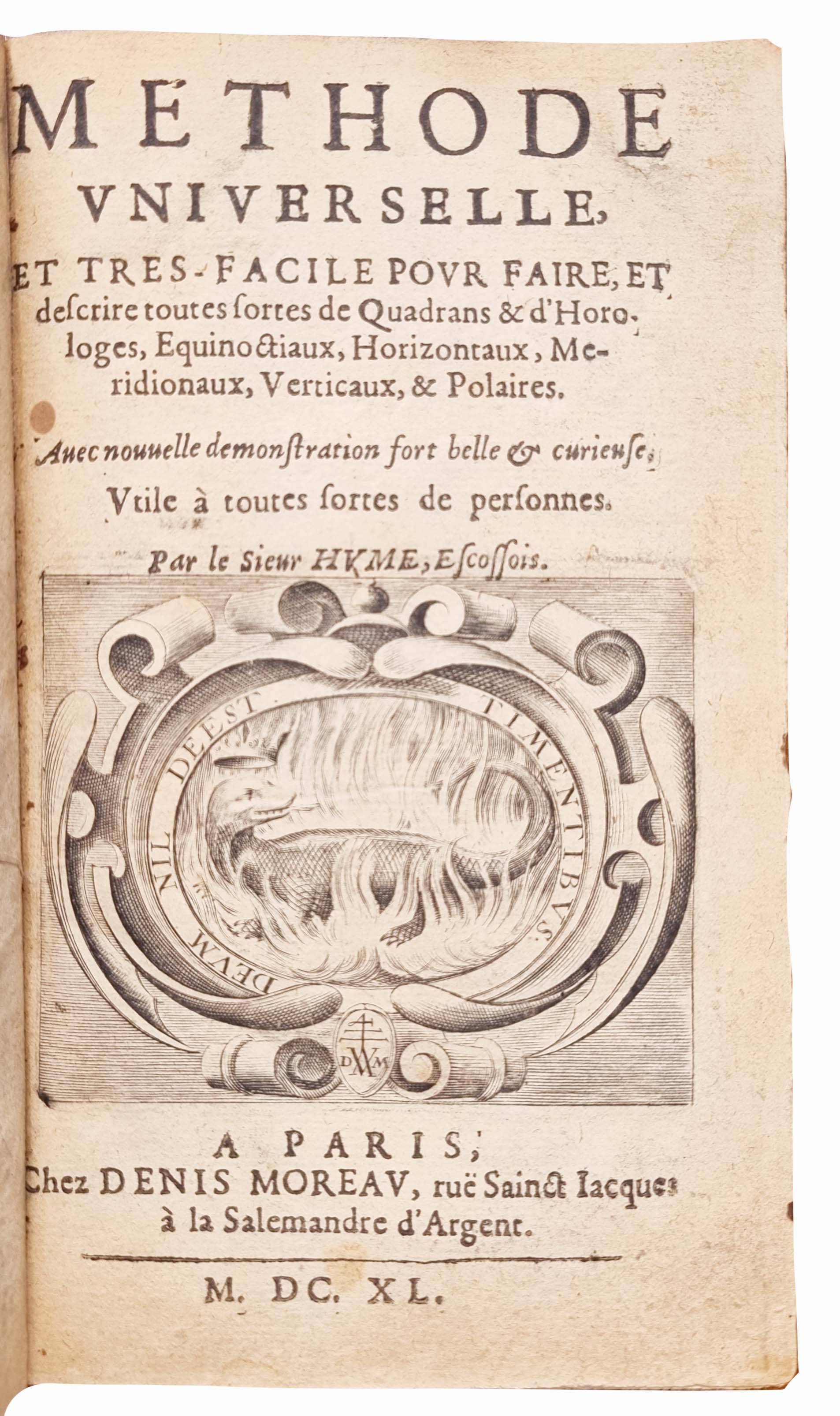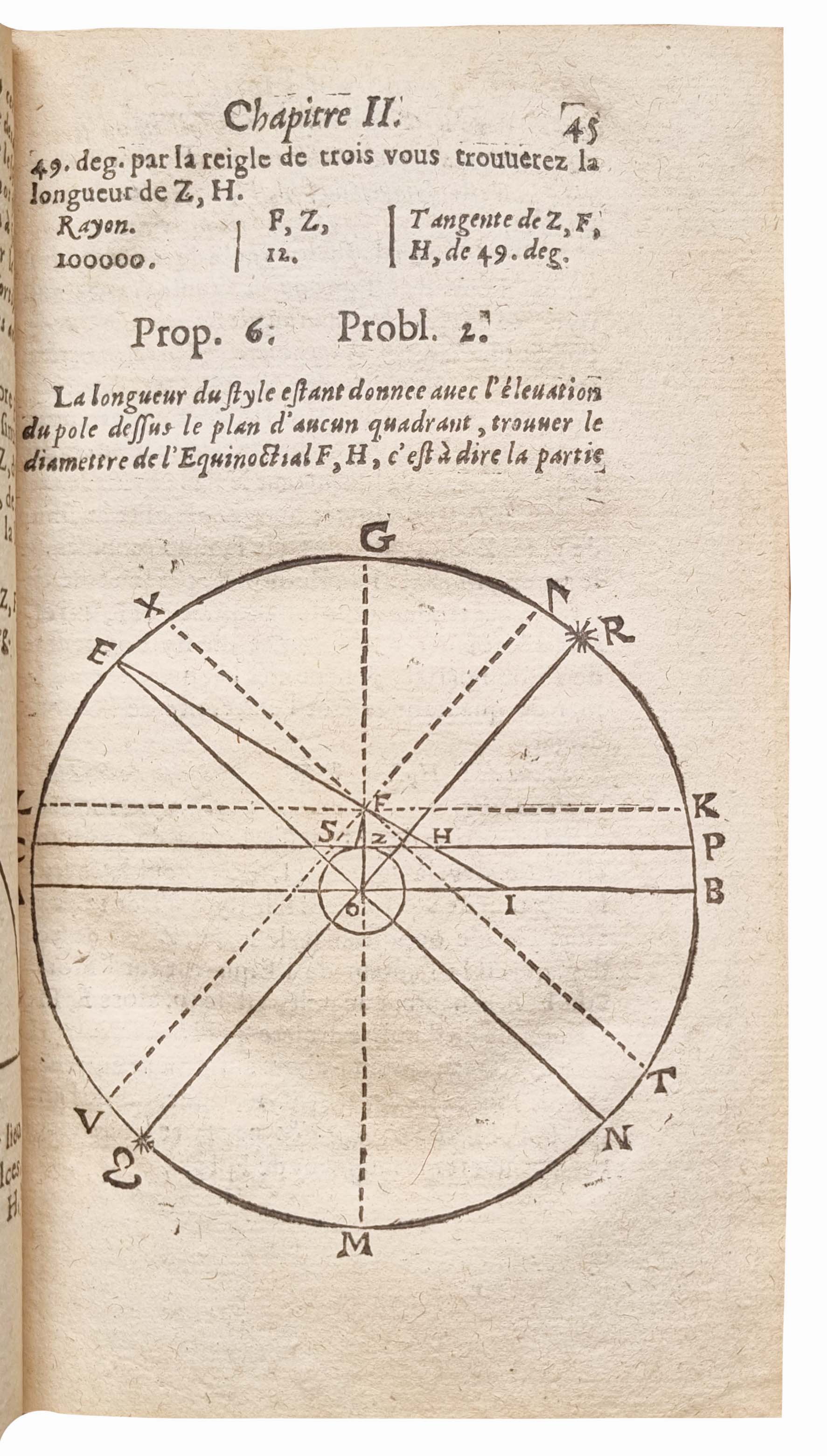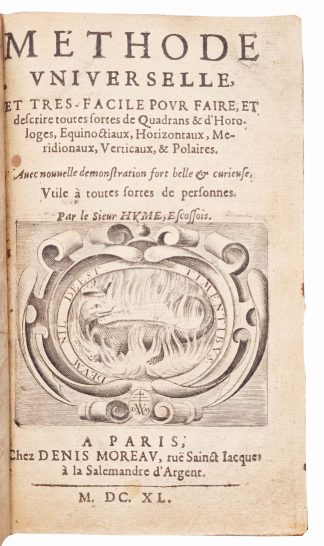HUME, James.
Méthode universelle et très facile pour faire et descrire toutes sortes de quadrans & d’horologes,.…
Paris, Denis Moreau, 1640£1,450.00
FIRST EDITION, second issue. 8vo. pp. [iv] 490 [ii]: [-]2, A-Z8, Aa-Gg8, Hh6, [last blank]. Roman letter some Italic. Title with Moreau’s engraved printers device of a salamander in flames on t-p, woodcut initials and headpieces, over two hundred woodcut mathematical illustrations, some full page. Mostly light browning, a few woodcuts fractionally shaved at outer margin, sporadic worm holes and trails, mostly marginal but affecting a few letters in places, a few marginal paper flaws (the printer decided they were not problematic enough to warrant discarding the paper). Rust burn to one leaf affecting a few letters. A perfectly acceptable copy in calf c. 1800, covers bordered with a gilt scroll, spine git ruled in compartments, worn and rubbed.
Rare work by the Scottish mathematician James Hume, a very complete treatise on the construction of sundials with over two hundred woodcut illustrations. It appears there was a pevious issue of this work with a slightly different title page; this edition uses the same sheets, omitting the dedication to the Marquis de Cinq-Mars. It is probable the dedication was abandoned as a consequence of the Marquis’ beheading, on Richelieu’s orders, at Lyon in 1641 for rebellion, along with Francois-Auguste de Thou (son of Jacques the celebrated bibliophile) who was unlucky enough to be caught up in the conspiracy against the king. In this treatise on how to build sundials, Hume apologies in his preface for his French which is not his “natural language” stating that he preferred to speak in a clear and scientifically precise language which was not always easy on the ear. He also remarks that he wanted to “give France what she had only seen in Latin, until now.” Hume was a Scottish mathematician who spent most of his life in Paris. Most of his publications were on advanced mathematics and trigonometry and he is perhaps most remembered for his ‘Une algèbre de Viète, d’une methode nouvelle, claire, et facile.’ published in 1636. “In 1636 Hume (also) published at Paris ‘Traité de la Trigonométric pour resoudre tous Triangles rectilignes et sphériques,’ &c At the end of the latter volume appears a list of nine mathematical works which Hume had written in Latin … There are besides ‘De Horologiis’ and ‘Grammatica Hebræa,’ proving that Hume’s attainments were not purely mathematical.” DNB. This work gives a theoretical and practical study of all the types of sundials then known: horizontal, equinoctial, vertical, southern and polar, but includes much additional mathematical material and what the author terms as “beaucoup de chose, qui seront assez curieuse et utiles.” It is in effect more a theoretical mathematical treatise than a work on sundials, introducing the reader to mathematical theory, including the use of algebra and trigonometry, via a practical work on sundials.
USTC 6040503. Houzeau & Lancaster 11453; Shaaber H502.In stock




